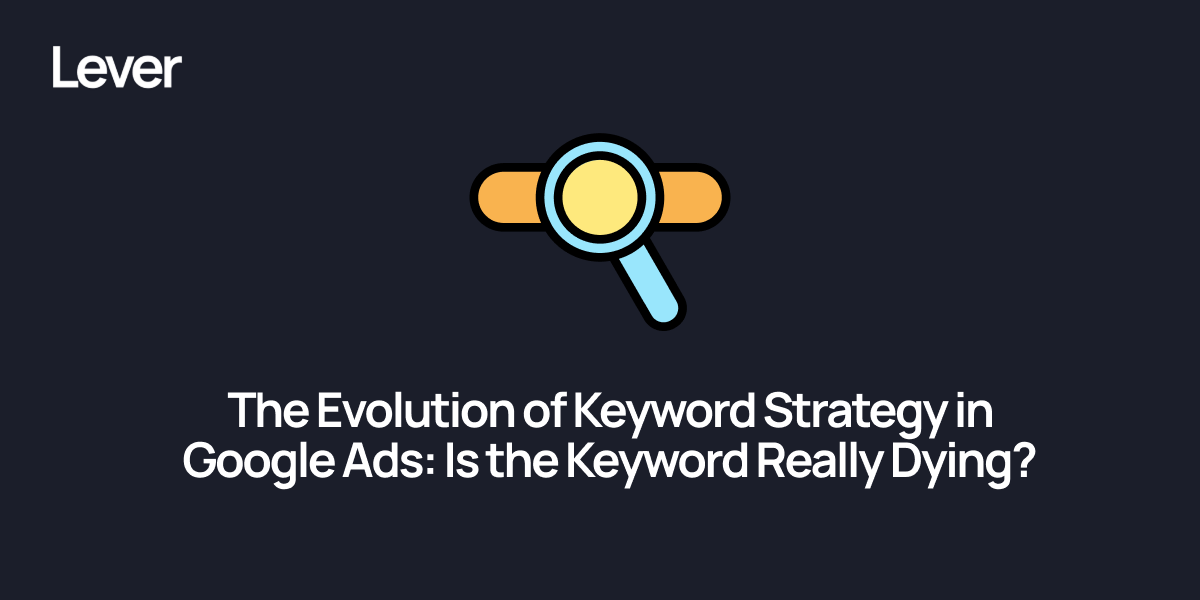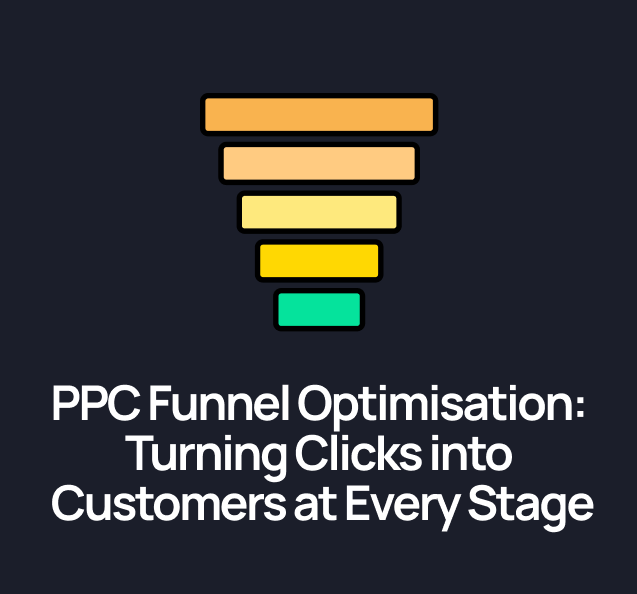When digital marketers talk about “keyword strategy,” the mental picture is often a neat list of key search terms, long-tails, match types, and negative keywords. But scratch the surface, and you’ll find the ground has subtly (and sometimes not so subtly) shifted beneath our feet. With generative AI, conversational search, and evolving monetisation models, the idea that “keywords are dead” is both too dramatic and too naive. What’s really happening is a transformation, and one full of nuance, tension, and opportunity.
In this article, we’ll walk through that evolution, assess what’s fading (and what will stay), and offer pragmatic guidance to advertisers who don’t want to become relics in the AI era.
A Short History: From Keyword Auctions to Intent-Driven Search
To appreciate where we’re going, it helps to remember where we came from. Google’s original AdWords (launched in 2000) made keyword bidding the linchpin of paid search: pick terms, choose match types, set bids, craft ads, and optimise. Over time, Google layered in more automation (automated bidding, broad match, smart matching, ad rank enhancements).
One major landmark was the introduction of “close variants”, Google’s algorithmic expansion to show ads for queries that were slight variations of your keyword (typos, pluralisation, stemming). This marked a soft erosion of pure keyword control: Google was saying, “We’ll handle some of the variant matching ourselves.”
Then came the shift toward intent and audience signals, rather than just matching on the literal string. The idea: build for what a user means, not just what they type. As Forbes put it: move “from keywords to intent”. Many writers now argue that the future of Google Ads lies in broader match types, themes, and automation, and that the exact-match and phrase-match rigour of old may gradually fade away.
So we’ve been inching toward this inflection point for a while. The question now: has the inflection point arrived?
The Case for “Keywords Are Dying” and Why It’s Exaggerated
Arguments for death
Several forces are often invoked to support the notion that “keywords are dying”:
- Conversational & Generative Search
- Instead of typing “best running shoes UK,” users might ask, “What running shoes should I buy if I run 20 km per week?” or even talk to an AI assistant. That changes how queries look and diminishes keyword-like predictability.
- AI Overviews / Zero-Click Results
- On many SERPs today, Google surfaces generative summaries (“AI Overviews”) before showing organic or paid links. That can reduce click-through rates, lowering the value of keywords as traffic drivers.
- Monetisation & Premium Models
- If Google or other search providers move parts of generative search behind paywalls or reserve them for subscription tiers, the dynamics of bidding and ad serving may change.
- Shifts to intent/theme/semantic matching
- Advertisers and platforms are increasingly concerned with semantic matching, topic modelling, and AI-driven expansion over exact keywords.
- Dynamic, on-the-fly keyword systems
- Recent academic work explores LLM-powered “on-the-fly keyword generation” to continuously adapt keyword sets in real time, suggesting that static lists may become obsolete.
All together, these arguments suggest that relying on manually curated keyword lists will increasingly feel like riding a horse while everyone else is in hovercars.
Why the “death” narrative is overstated
However, to claim keywords are dead ignores complexity and continuity. Here are reasons to resist that narrative:
- Keywords still anchor relevance and matching logic
- Even if the literal query changes, ad platforms still (for now) match advertiser inputs (keywords) to search queries via algorithms. The “keyword” is evolving, not vanishing.
- Control and transparency
- Keywords offer transparency and control; you can see which queries triggered your ads, adjust bids, refine match types, and exclude negatives. Moving entirely to “black-box” intent models sacrifices that control, which many advertisers will resist.
- Long-tail and niche queries still matter
- For very specific niches, technical products, or multi-step purchase cycles, precise keywords remain valuable. The more niche your audience, the more leverage you have in exploiting targeted keyword edges.
- Hybrid models
- Most forecasts are for hybrid systems: generative + traditional. Keyword-based matching isn’t going away overnight; it’ll be supplemented, reweighted, or absorbed into more complex models.
- Legacy systems and inertia
- Google Ads is huge, with massive infrastructure and advertiser reliance. Any transition is going to be gradual.
In short: we’re not looking at the extinction of keywords so much as their transformation.
What Kinds of “Keywords” Will Become More Important
If the classic keyword list is mutating, what are the variants and evolutions to watch?
- Prompt-like keywords / longer conversational phrases
- Think of inputs more like prompts than individual SEO keywords. Ads may need to match not “buy red dress” but “I want a red evening dress affordable in London.” This richer phrasing demands more context.
- Topic and theme keywords
- Instead of bidding on “digital camera deals,” you may bid on themes like “compact travel photography” or “mirrorless vs DSLR”, clusters of meaning that encompass many individual query strings.
- Intent segments / query intent categories
- More focus on mapping query intent (informational, transactional, navigational, comparison) and bidding by intent and audience rather than by the specific string.
- Semantic / vector-based keyword adjacency
- Through embedding models, it’s possible to compute semantic proximity and show your ad for semantically related queries that your “keyword” didn’t explicitly list. Recent research shows promising potential from ‘cluster-adaptive keyword expansion’.
- Dynamic generated keywords / adaptive expansions
- The “on-the-fly” keyword generation approach, where models monitor performance and dynamically instantiate new keyword variants in live campaigns.
- Negative / exclusion logic becomes more critical
- As match types and expansion become more permissive, negative keywords and exclusion logic will be vital guardrails. Classic negatives (e.g. “job,” “free,” “cheap”) won’t go away. These are still extremely important for Shopping and PMax ads, where you cannot specify keywords, only negative keywords.
- Brand, navigational, and “zero-query” inputs
- Queries like “Nike support” or “my account”, or even implicit signals when a user is auto-completing may remain reliable conversion paths. Their predictability gives them continued value.
How to Stay Ahead: Strategies for Advertisers in the New Age
So keywords aren’t dead, but they are changing. Here are adaptive strategies to future-proof your PPC strategy:
1. Embrace automation, but with guardrails
Adopt smart bidding, automated match types, and Google’s AI tools (e.g. Performance Max) to capture variants and long-tail traffic. But don’t set and forget; continuously monitor, prune, and override where needed.
2. Build layered campaigns (broad → intent → exact)
Don’t abandon exact-match or precise control campaigns. Instead, maintain layers: a tightly constrained core plus looser “intent capture” layers that you monitor heavily. Use performance signals from broader layers to inform narrower ones, and vice versa (i.e. “auto-expand and import winners”).
3. Prioritise query-to-ad transparency
Insist on having access to the search terms triggering your ads. If the automated match becomes more opaque, this becomes your early warning system. Watch for “rogue” queries that bleed conversion leakage and brand queries taking new business conversion credit.
4. Use semantic / embedding tools to assist keyword discovery
Tools that suggest semantically adjacent queries, clustering, or vector-based expansions can help you anticipate variant queries you may not have thought of.
5. Optimise for “AI overviews” and generative summaries
Since SERPs increasingly includes AI-generated summaries, structure your landing pages and ad copy so that your domain or content becomes a likely citation point. Think in question–answer form, facts, clarity, and schema markup.
6. Move from “clicks” to “outcomes”
If AI overviews reduce clicks, you must focus more on conversions, assisted conversions, lifetime value, and branding impact. Pay less heed to pure volume, more to quality.
7. Continuously test the frontier
Set aside a small “innovation budget” to test prompt-style ads, generative prompt fragments, or new match types. Use your experiments as intelligence to understand how algorithms are evolving.
8. Monitor platform shifts and monetisation models
Be alert to Google or others altering the rules e.g. premium search tiers, paywalled features, or integrated monetisation in AI answers. (Google is reportedly considering putting certain AI features behind paywalls.)
9. Strengthen first-party data and audiences
As keyword targeting becomes fuzzier, owning rich audience signals (CRM, remarketing, lookalikes) gives you extra leverage in targeting and layering.
10. Invest in content & domain authority
Even within paid search, your domain’s reputation, content depth, authority, and schema structure will matter more. These help your pages to be cited by AIs, improve Quality Score, and resist algorithm noise.
What to Watch: Key Trends on the Horizon
- On-the-fly keyword agents: LLMs embedded within ad platforms that dynamically propose, bid, and prune keyword variants in real time.
- Generative Search Monetisation: Charging for AI-powered search features or tiered access, which may reshape how ads appear or get inserted into conversational flows.
- Shift to query rewriting & prompt reconstruction: Platforms may internally rewrite user inputs (via generative or dense retrieval models) before matching to advertiser assets.
- Declining CTR, fragmentation, and channel proliferation: As more search happens in AI assistants, voice, or embedded systems, competition for ad attention fragments.
- Hybrid attribution and influence models: Instead of direct last-click keyword attribution, we’ll see more attribution models weighted toward domain influence, content prominence, even AI-citation influence.
Final Thoughts: As Keywords Evolve, So Must You
If you tell a keyword purist that “keywords are dead,” they’ll scoff. If you tell a promoter of the AI age that “keyword lists still matter,” they’ll roll their eyes. The truth lies between in the messy, ambiguous, always-shifting territory of evolution.
Keywords won’t vanish overnight, but advertisers who cling to decades-old tactics like exact-match obsession, manual keyword lists without adaptation, and ignoring semantic context risk becoming fossils. The ones who survive (and thrive) will treat keywords as one component of a broader adaptive system: a hybrid of prompt-thinking, semantic intent architecture, data-driven automation, audience layering, and content/authority building.
So: don’t bury your keyword tools, but upgrade them. Don’t fight the generative wave, surf it. And keep a small camera running to capture how your keyword maps morph over time because the keyword as you know it may not be gone tomorrow, but it likely won’t look the same.

.svg)








.svg)
